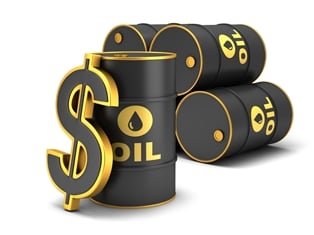Safely Transporting Oil By Railroad
The oil price crash impacts the railroad sector. Transporting freight gets cheaper, but demand for railcars to bring oil out of the Bakken fields and other places where pipelines were never laid is now dropping off. Refer to US DOT MARAD's 2008 study "Impact of High Oil Prices on Freight Transportation" for technical discussions of how the rail sector behaved under different conditions. Times have changed, perhaps permanently. Safety rules can also change with the times.

Railroad accidents made headlines when America's oil shale boom was roaring. Horrific, sensational railcar explosions are less useful justifications for transportation policymaking than statistics. The US DOT's Federal Railroad Administration (FRA) Office of Safety Analysis has the data. Running a ten-year report shows that total accidents declined by over 31% from 2006 to 2015, with percentage declines in every single subcategory. Rail transport has gotten safer than ever during the oil shale boom.
Oil shale's critics used to claim that Bakken oil was more volatile and thus more dangerous to ship in railcars. The National Transportation Safety Board's (NTSB) chair debunked this claim after some high-profile accidents. A refining industry study also found that Bakken crude fits within existing oil safety standards. The volume of fuel spilled, not its chemical composition, determines its potential hazard. Anyone can search the American Fuel and Petrochemical Manufacturers (AFPM) website for "Bakken crude" and see the evidence.
Forest Ethics does the public a disservice with its alarmist Oil Train Blast Zone tool. The relatively small number of rail accidents could never endanger millions of Americans, as the tool misleadingly implies. Requiring railroad operating companies to emplace blast barriers around every yard and connecting track in populated areas would be costly and probably unnecessary. It would be better for the railroad industry, along with FRA and NTSB, to take a Six Sigma approach to estimating deaths from oil-related transport accidents. Reducing mortality is important and statistics will show us exactly which locations need better safety measures.
Policy advocates are often remarkably ignorant of science, math, and economics. I don't think a typical anti-hydrocarbon advocate can perform an energy returned on energy invested (EROEI) comparison between biofuels (for example) and hydrocarbon fuels. They are welcome to start with refining and transport data from the Western States Petroleum Association and the California Energy Commission but I don't think they'll have the patience to get very far.
I am not prepared to demonize tar sands and oil shale as "extreme fuels" in the style of some renewable energy advocates. Hydrocarbon energy will be part of human life for a few more decades until renewable energy's infrastructure catches up. Pipelines are the safest and cheapest way to transport oil over long distances. Railcars are still the next best way despite the pleadings of safety paranoiacs.
Disclosure: No positions in any securities mentioned.



